VISIT TRÁS-OS-MONTES PORTUGAL

The fertile slopes and valleys of Portugal’s Trás-os-Montes region
Photo source: Wine Keller
Our wine experiences in the Trás-os-Montes wine region:
Trás-os-Montes Portugal - an introduction
The region of Trás-os-Montes in the far north-easter corner of Portugal, bordering with Spain, is one of the most unspoiled areas of southern Europe. Trás-os-Montes means ‘Beyond the mountains’ and this accurately reflects its location, beyond the Marão, Alvão and Gerês mountains, which separate the coast with Portugal’s interior country. Its geography has left the Trás-os-Montes region quite remote, with depopulation a significant challenge and traditional agriculture industries the main economic focus.
However, once you travel through the mountains and explore Trás-os-Montes, you find one of Portugal’s most beautiful regions, with rapidly changing scenery - from mountains to moorland, pine forests to lush, green valleys, vineyards, to fruit orchards to olive groves and several protected areas and parks.
The provincial capital of Trás-os-Montes is Bragança, dominated by an impressive hilltop fortress. Other significant towns are Chaves and Vila Real and the rest of the population live in small towns and villages dotted around the region.
The climate is extreme, with very cold winters and hot summers and the region is divided into two distinct climatic zones, known as the Terra Fria (Cold Land) and the Terra Quente (Hot Land).
A land of ancient beliefs and traditions
Trás-os-Montes is a region rich in tradition, culture and strongly protected customs, some of which are shared with neighbouring Galicia in Spain. Its people are hard-working, proud and independently minded and live quite simply, relative to other regions across Portugal and southern Europe. Local dialect is spoken and ancient beliefs are still celebrated today, in towns and villages across Trás-os-Montes, holding festivals and carnivals, which are more pagan and mystical rather than religious.
The most famous carnival and cultural symbol of Trás-os-Montes is held in Podence each year, a village some 40km from Bragança. Here the Caretos of Podence don masks and colourful costumes, entertaining crowds in the streets.
You can visit Podence and its museum to experience and learn more about the famous Caretos of Podence carnival.
Entrance to village of Podence
Exploring the village
Visiting the museum in Podence
Carnival costumes
Trás-os-Montes wines Portugal
Trás-os-Montes is perhaps one of the least known wine regions of Portugal, however it has a strong winemaking tradition, with many old vineyards and traditional Portuguese grape varieties. It borders the Vinho Verde wine region to the west and the Porto and Douro wine region to the south. It shares many similarities to the Upper Douro wine region, in terms of soil and climate - in fact the Trás-os-Montes region is also known historically as the ‘Trás-os-montes e alto douro’ region.
A wide variety of wine is produced here, influenced by the different micro-climates across the region. Generally, it is a mountainous area, differing but high altitudes, with a harsh continental climate. The soils are predominantly granite soils, with some schist patches.
Typically, Trás-os-Montes wines have higher alcohol levels, but vineyards in the higher, cooler areas produce lighter and less alcoholic wines. Some of the higher vineyards supply grapes for Portugal's most famous wine, the semi-sweet, lightly sparkling rosé, Mateus.
Trás-os-Montes wine sub-regions
‘Vinho Regional Transmontano’ can be produced throughout the region, but there are three sub-regions where wines with DOC Trás-os-Montes are permitted:
Chaves - bordering Spain in the north, where vineyards lie on small valley slopes leading towards the main Tâmega river valley
Valpaços - in the centre of Trás-os-Montes, a hilly plateau rich in water supplies provided by several streams and rivers
Planalto Mirandês - here in the south, the River Douro is the main influence in vine growing
The best vineyards to qualify for the DOC generally follow the the region's four main rivers: the Douro, the Sabor, the Tuaregion and the Tâmega (famous for its thermal springs and the source of Portugal’s most famous mineral waters).
Trás-os-Montes red wines
The red wines are generally fruity and full-bodied with a deep intensity of colour. Red grape varieties include Touriga Nacional, Bastardo, Marufo, Tinta Roriz, Touriga Franca and Trincadeira.
Trás-os-Montes white wines
The white wines are smooth and aromatic, with a high intensity of fruit flavours. White grape varieties include Côdega do Larinho, Fernão Pires, Gouveio, Malvasia Fina, Rabigato, Síria and Viosinho
Recommended Trás-os-Montes wineries:
Just a few years ago there were only a handful of private producers in Trás-os-Montes, now there are more than 60. Many small-holders still deliver their grapes to local co-operatives. Here is a selection of the producers and wineries in Trás-os-Montes.
Trás-os-Montes olive oil
In addition to the growing focus on producing high quality wines for the Portuguese and international markets, Trás-os-Montes is a wonderful and highly successful region for olive oil production. It is the second largest olive oil producing region in Portugal, after Alentejo, and the most awarded region internationally. There is a wide range of Trás-os-Montes olive oils due to the different characteristics of each olive grove, the climate and the terroir.
Travel guide - What to see and do in Trás-os-Montes Portugal
How to get to Trás-os-Montes
The nearest airport to Trás-os-Montes region is Porto. From here there are excellent motorway links through to the Trás-os-Montes region and its capital Bragança.
Where to stay in Trás-os-Montes
Our advice is to seek accommodation in Bragança, as this provides an excellent base for touring the Trás-os-Montes region. We would also personally recommend the ‘Pousada de Bragança’. See below the view from this hotel to towards Bragança citadel - also see our wine travel blog about our stay here and our tour of Trás-os-Montes.
When to travel to Trás-os-Montes
It is very hot in July and August in Trás-os-Montes and you want to avoid the cold and harsh winter months, so our recommendation would be May-June and September-October.
Visit Bragança, the capital of Trás-os-Montes
It’s really worth spending time in Bragança, especially up in the ancient walled citadel, high above the city centre, started in 1130 by Portugal’s first king, Afonso Henriques. This is a really impressive attraction and you can enjoy wonderful views over the surrounding countryside from the ramparts. As well as seeing the ancient, but really well preserved monuments, you can wander the beautiful old stone roads and side alleys, and walk a small part of the Camino de Santiago which joins here!
See the well preserved 12th century fortress and the impressive tower - said to be Portugal’s finest and an important place of refuge for different royalty over the years. You can visit the military museum here today. Just across the square lies the beautiful church - the Igreja de Santa Maria - and the Domus Municipalis - dating back to the 15th century and said to be the oldest town hall building in Portugal.
The ancient city walls and traditional houses
Bragança Castle and tower
The beautiful church in the citadel
The ancient water storage for Bragança
Bragança museums
There are some fine museums in Bragança, including Museu Ibérico da Máscara e do Traje (Iberian Museum of the Mask and the Costume), which we enjoyed visiting during our tour of Bragança. Also, there is the Centro de Arte Contemporânea Graça Morais showcasing the art of Portuguese painter Graça Morais.
The small spa town of Chaves, just 10km away from the Spanish border in the north of the region is also worth visiting, as is Vila Real - best known for the Palácio de Mateus (Casa de Mateus) - the Portuguese manor house seen on the labels of bottles of Mateus Rosé.
Spend time in the beautiful nature parks of Trás-os-Montes
See here for more information about the nature parks in Trás-os-Montes.
Peneda-Gerês National Park - Portugal’s only national park, with lots to see including lakes, waterfalls, granite massifs and forests
Park Natural do Alvão - the smallest of Portugal’s nature parks, but lots to see including beautiful waterfalls and traditional villages
Parque Natural do Douro Internacional - a haven for several species of endangered birds
Park Natural de Montesinho - Forming a natural border with neighbouring Spain, the park is covered with dry lavender, juniper and many other fragrant species - a wild expanse of fertile moorland that is richer in wildlife than anywhere else in the Portugal
Ecopark Azibo
Visit Ecopark Azibo in the municipality of Macedo de Cavaleiros - a beautiful space, offering lots for all ages with outdoor, nature and sports activities, including water sports on the beautiful lake and beaches - all set in the context of biodiversity and nature.
There is also a great bar and restaurant in the park, overlooking the lake, called Casa do Lago.
The Iberian Mask Museum in Bragança
Enjoying lunch at Casa do Lago - Azibo Ecopark
Beautiful Azibo Ecopark
Nature & outdoor fun
Traditional foods and dishes in Trás-os-Montes
Trás-os-Montes people are very proud of their gastronomy - their local, traditional wines and foods - and rightly so!
In the ‘cold’ region - Terra Fria - the following products are typical: Sausages - in particular smoked sausages, including ‘chouriço’, ‘alheira’ and ‘salpicão’; Pork - from the rare breed Porco Bísaro, Olives and Olive oil, Chestnuts, Mountain honeys.
In the ‘hot’ region - Terra Quente, Vines and Fruit are mostly grown.
Other traditional Trás-os-Montes dishes include:
Dark, smoky, paprika-rich cured hams
Posta Mirandesa - huge steaks from young, long-horned cows
Roasted goat cooked in wood-fired ovens
Country soups and stews
Cozido à Portuguesa - boiled meats with vegetables
Dried, salted octopus and salted cod - bacalhau
Cheeses - in particular sheep cheese
For more information about visiting Portugal’s Trás-os-Montes region, visit Portugal Travel Guide and Portugal Visitor.
Breads, cheese & olives
Curd sheep cheese & fig/apricot jams
Cured ham, olives, olive tapenade & cheese
Local mountain honey & chestnuts



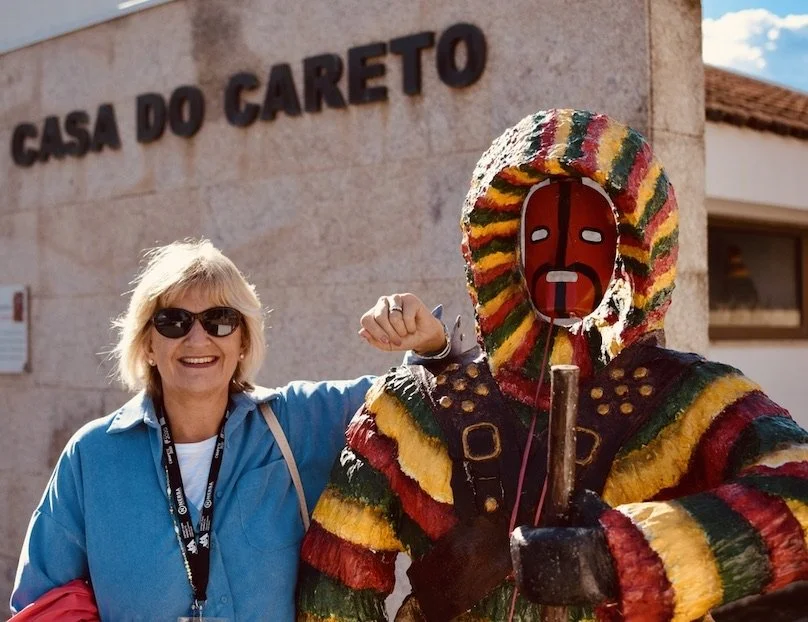


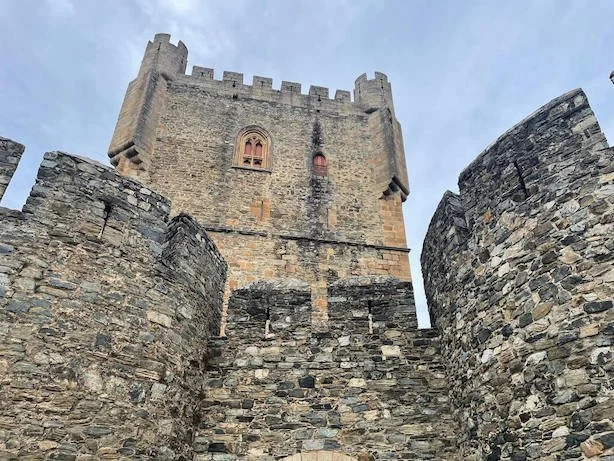




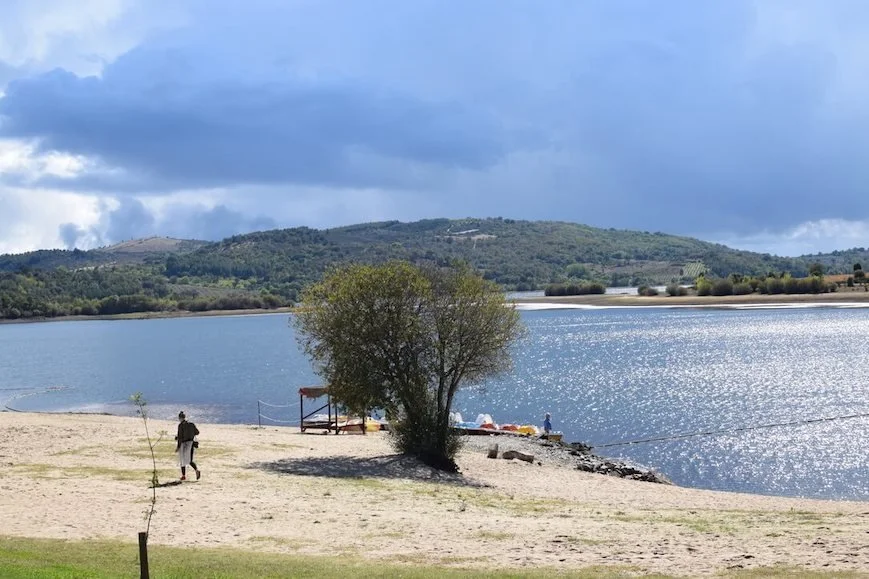



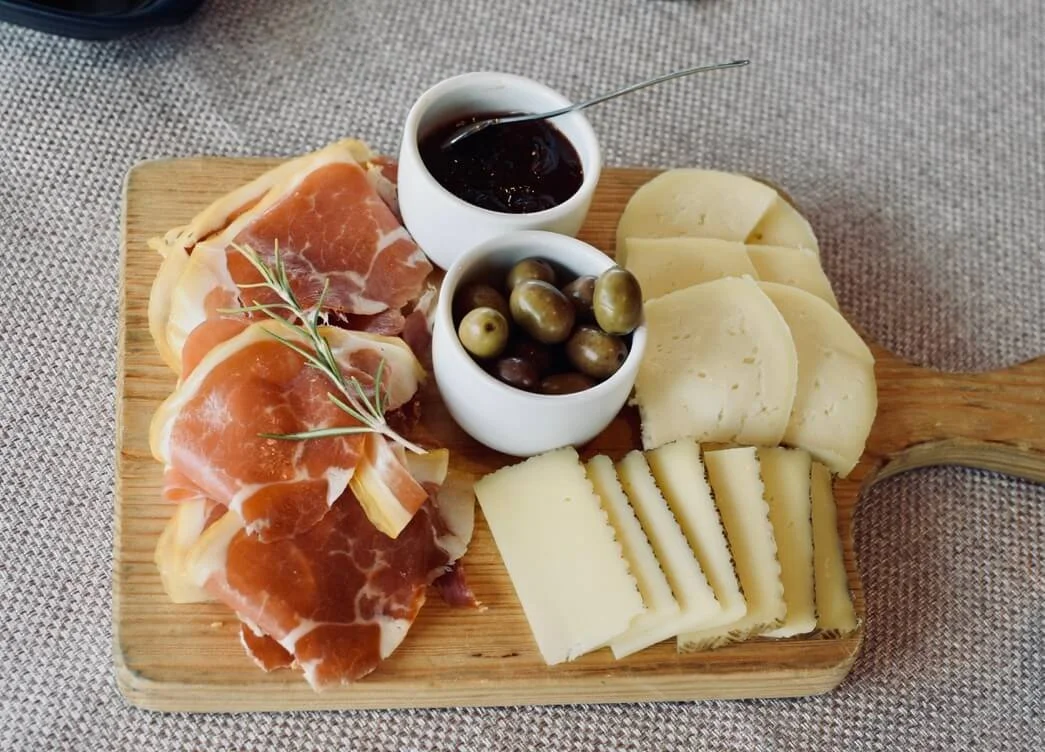
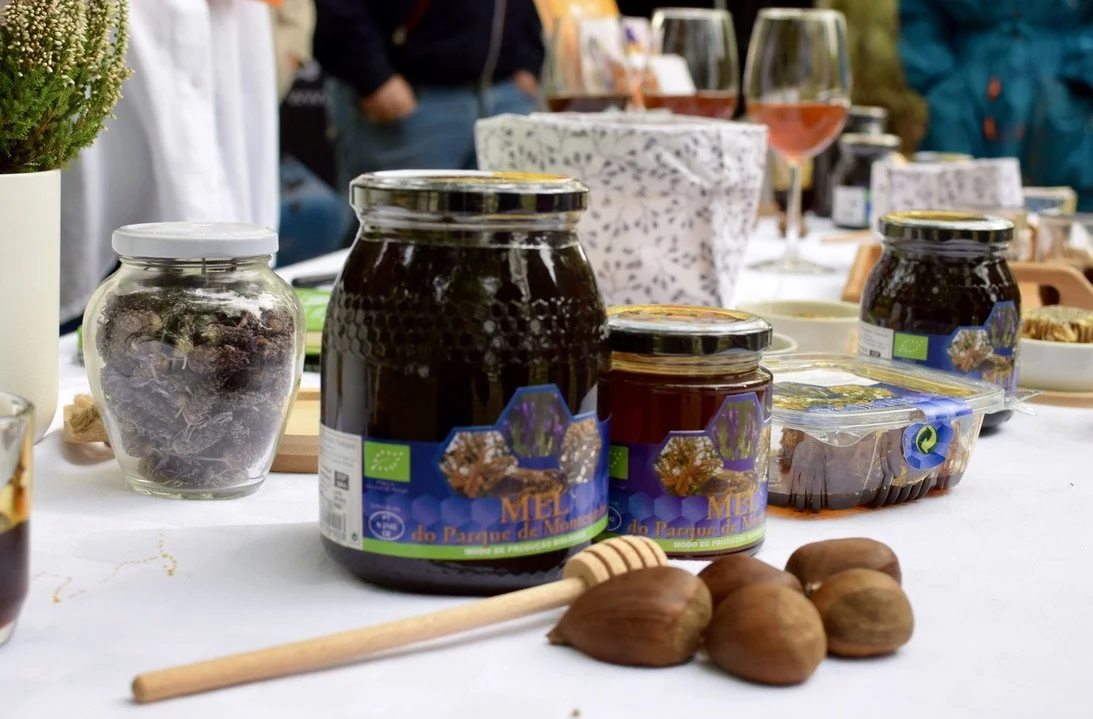
A tour to discover the hidden gastronomic delights of Trás-os-Montes - a little-known wine region of Portugal, situated in the far north of the country, at the Spanish border.
Read all about the fantastic, artisan food and wine producers we visited and what we discovered about the region, its people and their way of life…